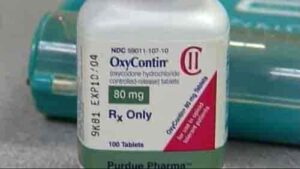
ANCHORAGE – The Alaska Health Analytics and Vital Records Section (HAVRS) and Office of Substance Misuse and Addiction Prevention (OSMAP) have released the finalized 2023 Drug Overdose Mortality Update. This report contains detailed statistical reporting and other information about the demographic characteristics of overdose victims, where deaths occurred, the types of drugs and multidrug combinations involved in fatal overdoses, and prevention strategies to help reduce overdose mortality.
In 2023, we lost 357 Alaskans to fatal drug overdoses, 265 of which involved opioids. Overdose death rates were highest among men, American Indian/Alaska Native people, people aged 35-44, and people located in the Anchorage region.
“Opioids continue to devastate Alaska’s residents, accounting for nearly 75% of all drug overdoses,” says Lindsey Kato, Director of Public Health. “However, there is still hope. Governor Dunleavy, the Legislature, and partners across the state are committed to a comprehensive, multi-faceted approach to save lives. We are working together to raise awareness about available resources for parents, educators, and youth; while also helping providers and the public better understand the vital role they play in this critical time. Our at-risk friends, neighbors, and community members deserve our best efforts as we collaborate to find new and innovative solutions to address the growing threat of overdoses.”
Naloxone kits and educational materials have been distributed to schools and incarcerated settings around the state. Additionally, the Department has launched an extensive awareness campaign, with the primary message of, “Save a life. Carry naloxone.” The goal is for every Alaskan to learn the signs of an overdose, carry naloxone, and be trained on how to respond. Having the life-saving medication in their purse, backpack or first aid kit can save the life of a person who may be experiencing an overdose for a variety of reasons. For many, surviving an overdose provides them another opportunity to connect to treatment.
The Department has also updated opioids.alaska.gov to provide more support to Alaskans who have been affected by the opioid epidemic. This user-friendly layout, updated with additional tools and resource links, aims to connect Alaskans who need treatment and recovery resources, naloxone distribution centers, and more.
“The burden of overdose fatalities will not be solved by one agency, organization, or department,” says Dr. Robert Lawrence, Chief Medical Officer. “Our response is weaving together the work done by so many, along five cords of intervention: interdiction, prevention, harm reduction, treatment, and recovery. Only with strong collaboration will we be able to pull people to freedom and turn the tide on this epidemic.”
Alaskans seeking resources for themselves or a loved one should contact their primary care or mental health provider, visit findtreatment.gov or call 1-800-662-4357 to find treatment options. For help with mental health-related distress, including thoughts of suicide or substance use crisis, call or text 988; dial 911 for a medical emergency. Additional information about overdose in Alaska, prevention, and other resources are available at opioids.alaska.gov.
# # #
